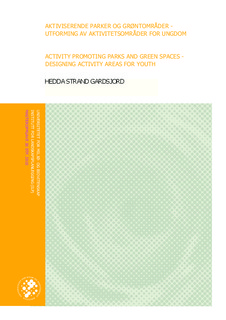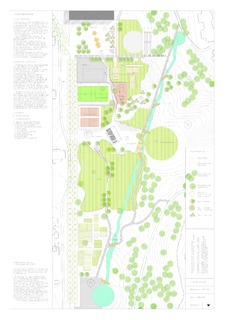| dc.description.abstract | Two thirds of the adult population (over 15 years old) in Europe do not meet the recommended daily amounts of physical activity, and it is believed that 600 000 people die every year as a result of inactivity. There is reason to believe that the physical environment influences our activities. Regular physical activity can improve our physical and mental health and data suggests that physical activity in green environments, so called green exercise, has even greater positive health effects.
Studies have shown that people are more likely to be active as adults if they were active in their late teens. In other words, youth physical activity is crucial for being active later in life. The aim of this study is to investigate significant physical environment characteristics for youth self-organized physical activity in parks and green spaces, asking: “How can the design of urban parks and green spaces promote youth self-organized physical activity?”
A literature review of available scientific studies that explore the topic has been conducted. The results and conclusions from the review have been utilized in the design of an urban green space, with the aim to promote youth physical activity.
The literature review showed evident limitations to the literature exploring the topic. Only a few of the physical environment characteristics are studied to a sufficient extent, using appropriate methods. Still, quite a few specific park characteristics stood out as significant. Three or more studies showed that the investigated physical environment characteristics availability, sports fields/facilities for movement, safety, paths, nature-/green areas, number of facilities, renovation, aesthetics, open spaces, form and size, maintenance, variation, quality, attractions, trees/shade/shelter, and water, were significantly positively related to youth physical activity in parks and green spaces.
The study provides an overview of the relationship between the physical environment in parks and green spaces and youth physical activity. The study also identifies requirements in further research. There is a need for more standardized methods of measuring the relationship between environmental characteristics and physical activity, and also a need to clarify the central concepts and definitions. The combination of different methods, i.e. combining direct observation with depth interviews will provide a more comprehensive picture of youth’s preferences for activity areas. Studies investigating specific parts of the physical environment are few. Youth, in this study teenagers or adolescents, is an understudied age group. At the same time, it might be appropriate to also include so called young adults in future research exploring this topic.
The second part of this report proposes a design of an activity area in an existing green space at Furuset in Oslo, as part of the ongoing project Verdensparken – The World Park. | en_US |

